If you poke around a kitchen store or your friend's well-stocked kitchen, you'll see that there are many styles and types of kitchen knives.
Knives are extremely interesting. I personally couldn't get a handle on the types until I had been cooking seriously for a few years.
Today I'll share some of that knowledge with you – including diagrams and descriptions of all types of knives. Let's cut to it!
Basic kitchen knives are the knives you'll see in nearly every home or apartment.
If you're serious about cooking at home, these are the knives you'll want to look into – no matter what type of food you prefer.
The Chef's knife is the centerpiece of the kitchen knives. It's an all purpose knife, rigid, and usually comes with a straight blade ending in a point. The shape of the blade makes it easy to 'rock' the blade back and forth to cut small items in a rhythm.
Chef's knives come in all sizes, but usually are 8 - 12" long.
For your first Chef's knife, I suggest a longer blade – it comes in handy when cutting longer vegetables and meat. It's a bit harder to wield a longer knife, but you can use your utility knife or paring knife when you need to do finer work.
Use a Chef's knife for almost everything: cutting meat and nuts, dicing veggies, and slicing up herbs.
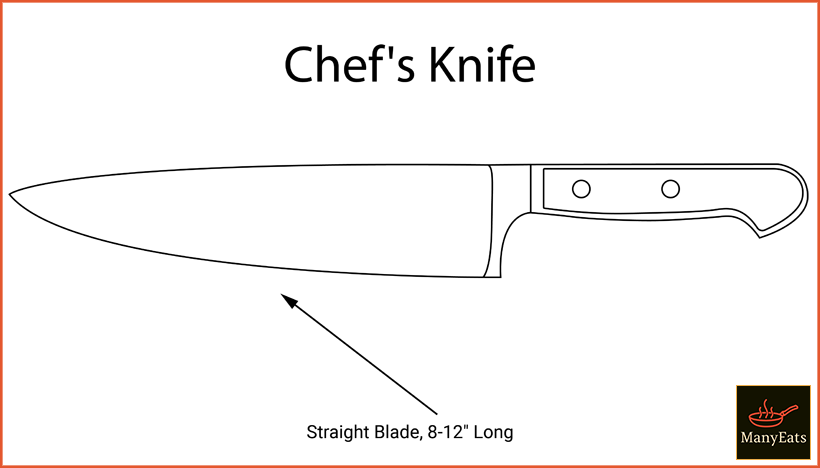
A paring knife is a rigid, short, roughly 3" - 4" long knife you can use for all your detailed cutting work.
Unlike a Chef's knife, its shorter length makes it very easy to wield with less risk of cutting yourself.
I'm much more confident with a paring knife than my Chef's knife. Sometimes I'll even use the paring knife while holding items in the air, such as carrots.
A paring knife is useful for many things you shouldn't do with your Chef's knife. Use it to peel fruits, cut smaller veggies, and slice slippery things like garlic cloves and grapes. Don't use it for cutting and slicing meat though - you have the Chef's knife for a reason, and you'd need to move a small knife back and forth too much.
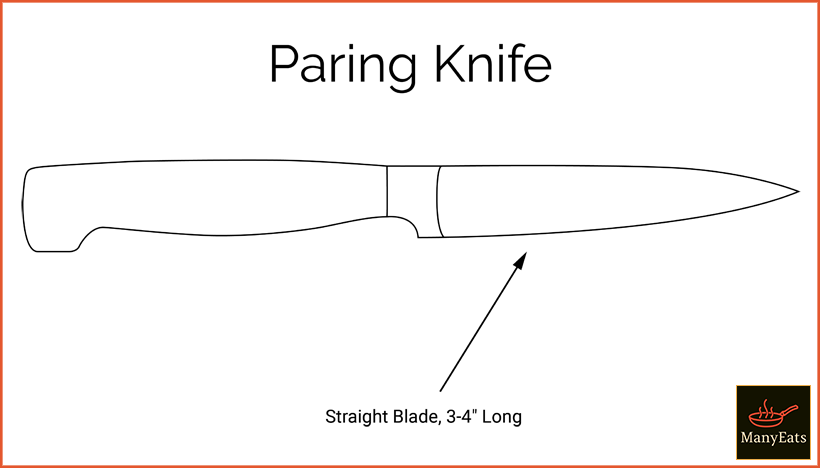
A utility knife is a mid-sized knife, usually around 4-7" long with a serrated (wavy) cutting edge. It's also usually a bit flexible.
The utility knife sits in a weird spot: good at many things but great at none.
Most people who bought (or received) a knife set have a utility knife, but usually a Chef's, paring, or bread knife is better for what you want to do.
Take the advice from FuzzyChef at Cooking Stack Exchange: you can skip it if you don't have one. It's useful if you often cook with another person using the same set of knives, and, yes, it can cut a sandwich or tomato well!
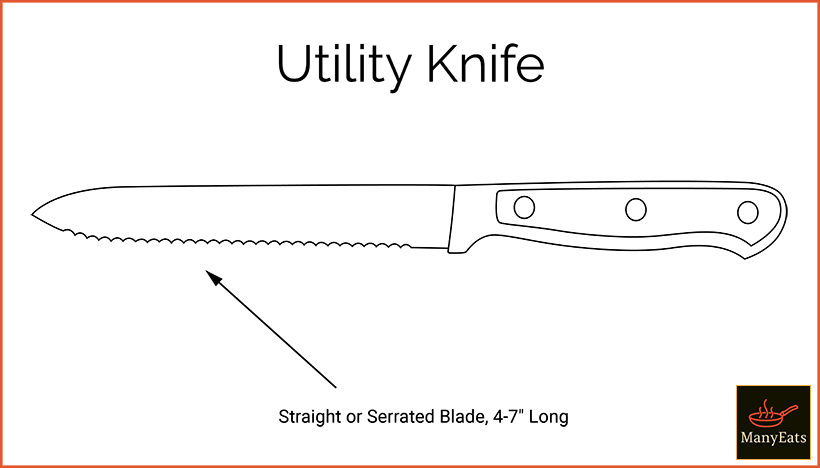
Every kitchen needs a serrated knife - and preferably a longer one! Long serrated knives – starting at 6" up to around 14" – are generally known as "bread knives".
Bread knives are long and mostly rigid. If you don't have one yet, I suggest getting one on the longer side, 12" or 14".
Befitting their nickname, long serrated knives are excellent for cutting bread and cakes (see my roundup of bread slicers, here). I also use mine sometimes to carve meats. They’re also amazing for cutting harder things, such as pineapples or not-quite-defrosted meats.
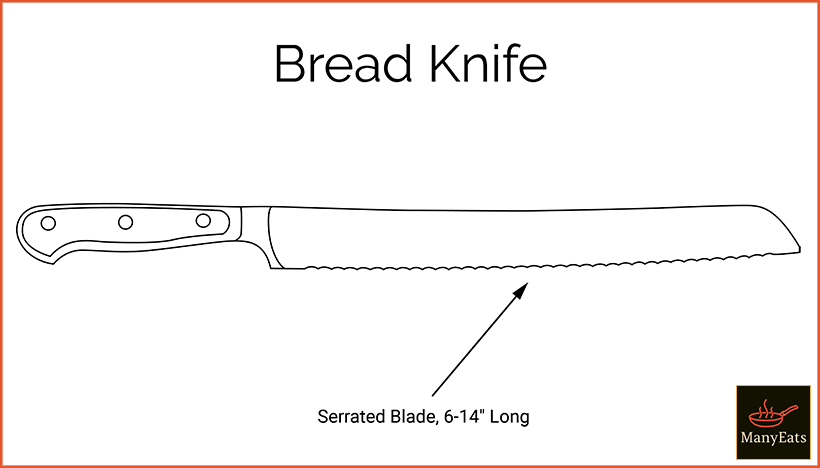
You got me – kitchen shears aren't knives. Still, they're a staple of modern kitchen cutlery!
Kitchen shears are straight or curved bladed scissors which often lock shut. They're very sharp with well-aligned blades and usually around 5" - 8" long.
Use them to snip tough vegetables, trim fat from tough meats, and cut up your herbs.
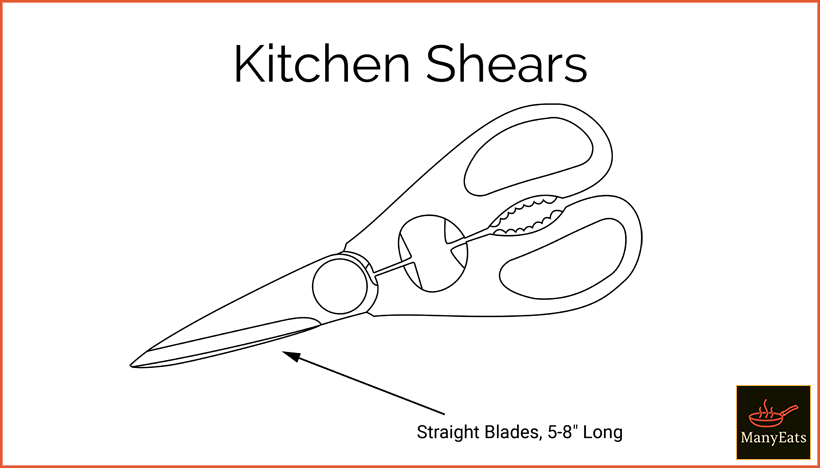
Once you get past the basics, peoples' kitchens differ quite a bit.
The next set of knives are pretty common. If you don't own them yet, not every knife here is necessary once you have the above basics covered.
When most people think of a butcher knife, they think of a cleaver – a Horror Movie mainstay.
Cleavers have a rectangular block blade with a straight edge usually around 6-8" long. Butcher knives are actually much different; they are usually 8-12" long with a curved blade and a straight edge.
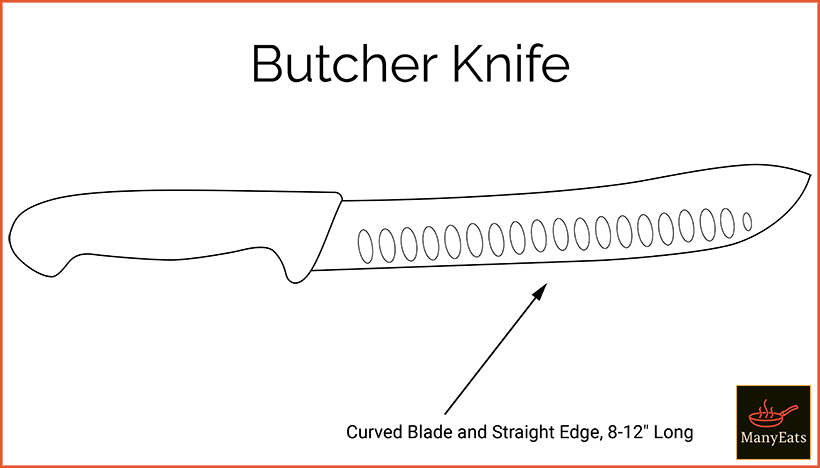
Use either a cleaver or a butcher knife to slice meat and make sharp cuts. A cleaver is also useful for chopping veggies.
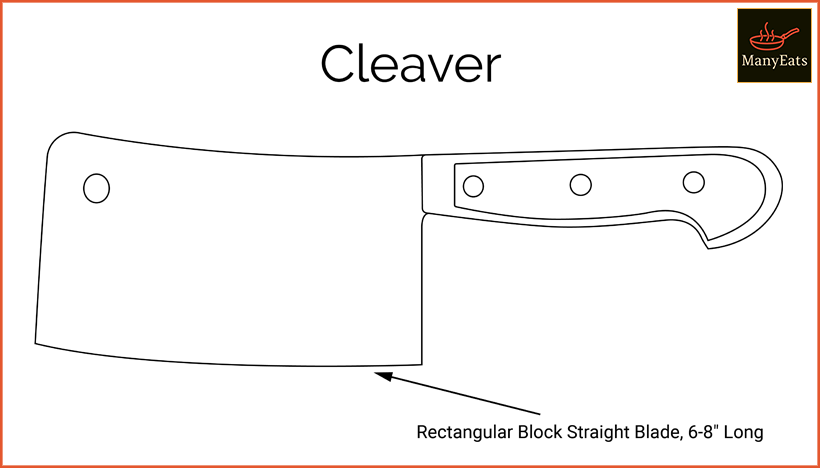
Boning and fillet knives are both flexible or semi-flexible curved blades used to separate meat along a bone. Boning knives generally are used for land animals while fillet knives are for fish. Fillet knives are slightly thinner and more flexible than boning knives, but they can mostly substitute for each other.
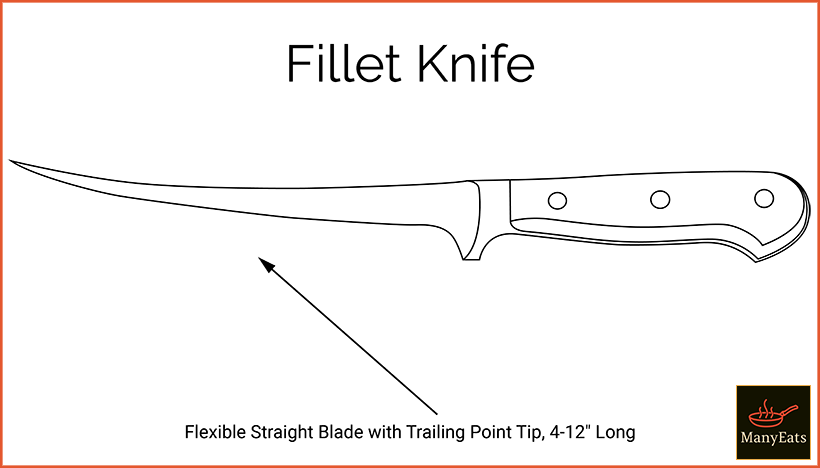
Boning knives are usually around 6" long while fillet knives vary a lot and fall in the 4 - 12" range. These knives are useful if you often carve fish or meat, but you can usually get away with other knives if that's uncommon.
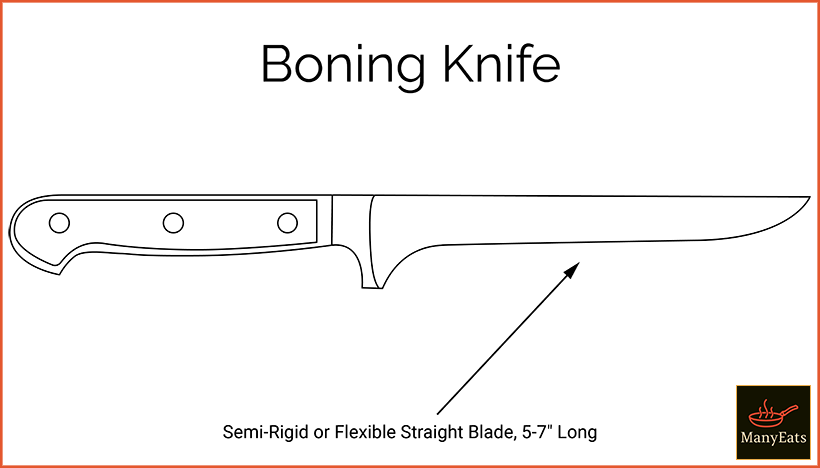
Slicing and carving knives are a bit different but often substitute for each other in the kitchen. They are both between 8 - 12" long on average, with a bit of flex: carving knives on the stiffer end and slicing knives on the more flexible.
Both knives substitute for each other but are a little different. A carving knife comes to a point and is usually on the shorter end of the range. On the other hand, a slicing knife is rounded at the end and is usually longer.
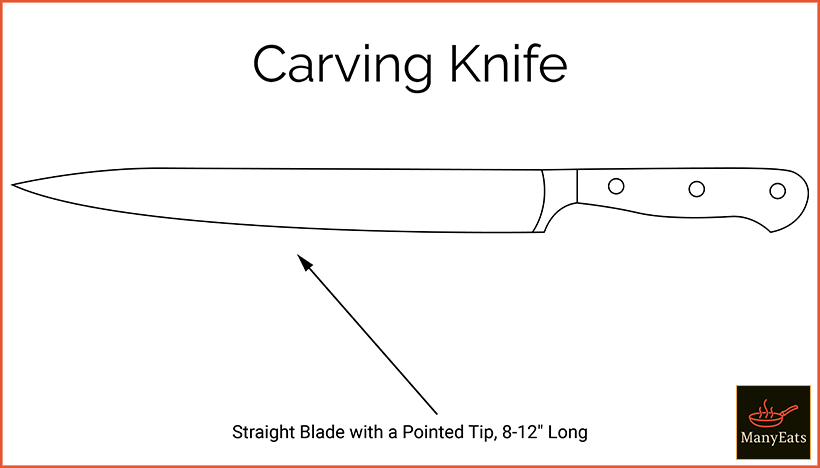
Use slicers and carvers to cut slowly cooked meat, such as roast beef, ham, or smoked meats. I like a longer slicer – 10" or more – with a scalloped edge (the divots on the side) which helps you avoid tearing meat while slicing.
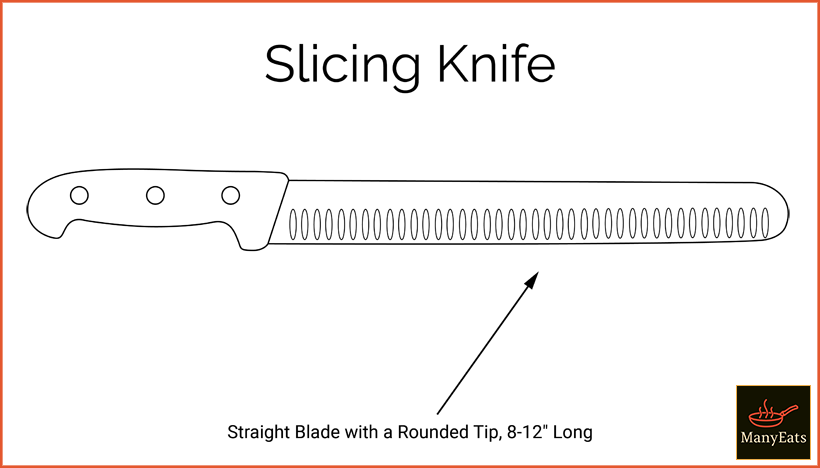
Steak knives are 4" - 6" long blades used at the table while eating.
Primarily, they're useful in cutting cooked meat like chicken, pork and (of course) steak. They're also useful for cutting smaller pieces of bread where your bread knife is too long.
The sharpest steak knives have a straight blade. However, you usually cut meat on top of hard plates made of materials like ceramic. Since hard plates dull your knives, it's more convenient to get serrated or micro-serrated blades on steak knives.
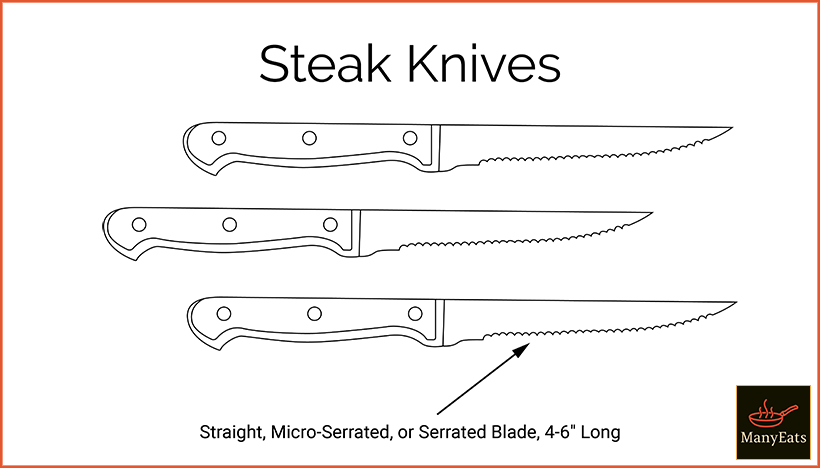
Butter knives are small, 3" to 6" dull blades (sometimes with very small ridges) with a curved end. Most people consider them equivalent to a place knife or dinner knife – just know that there is a formal distinction.
They're good for spreading saturated fats such as butter and coconut oil as well as soft cheeses.
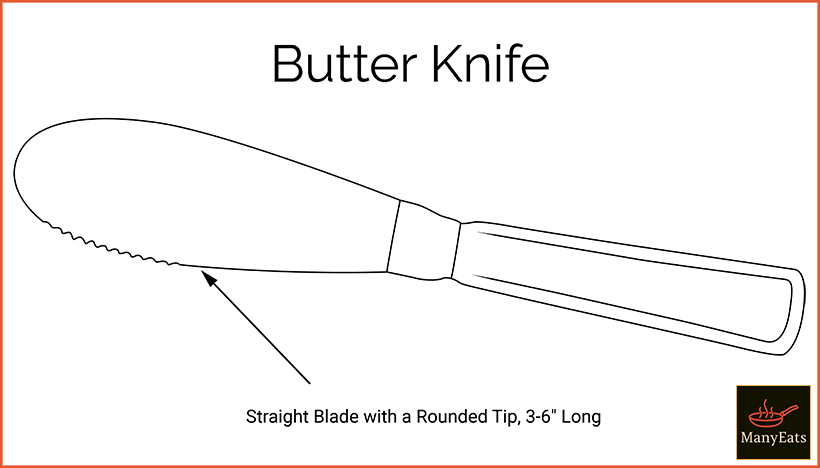
At this point we're getting to some of the rarer knives.
You might have a few of these already, or perhaps you heard of them somewhere. Know that they aren't required to be able to cook well at home – even if your chef friend insists!
At the end of the day, add these knives to your kitchen if you find yourself doing specific tasks often.
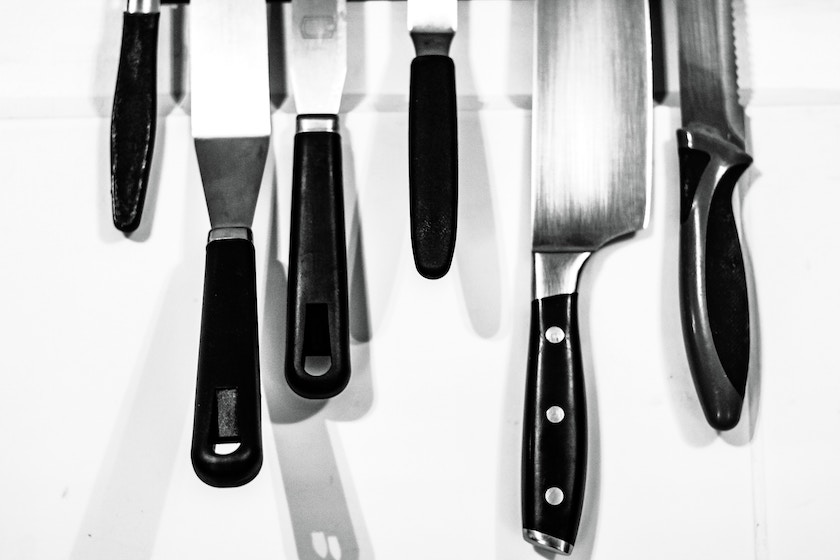
We just covered a lot of knives – but there are even more specialized knives out there for culinary specialists!
You can have a well-stocked kitchen before you even get through the list here. I personally don't even have everything in this post at home (and I use some other knives only once a year!).
To start, here are the knives you'll probably need:
If you eat a lot of meat, some others to strongly consider:
If you eat a wide variety of vegetables, take a look at:
Personally, I also have a set of cheese knives and a cheese cutting board. They're great for serving cheese spreads with wine to visitors!
After you stock up with the essential knives, let your personal cooking direct where you go next.
As you get better with one style of cooking you'll use certain knives more often. This is when you should start to explore where specialty knives can help. After that, come back here and tell me about what you're using... and how its working out!